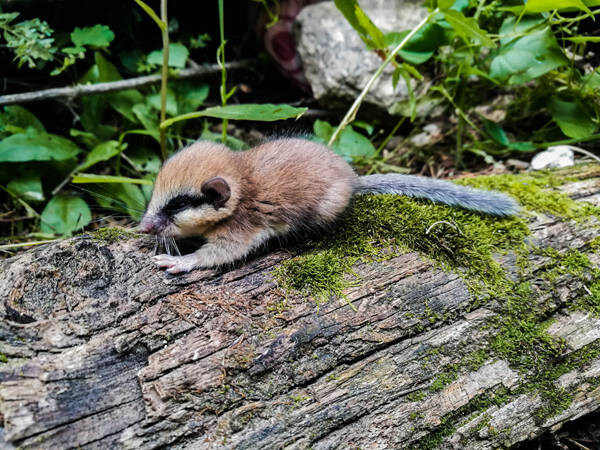Dryomys nitedula
IUCN
LCBasic Information
Scientific classification
- name:Dryomys nitedula
- Scientific Name:Dryomys nitedula,Dormouse,Dyromys milleri,Mus nitedula Pallas,Eliomys angelus
- Outline:Rodents
- Family:Rodentia Dormouse
Vital signs
- length:80-100mm
- Weight:
- lifetime:
Feature
The body is medium in size, with a dirty grey tail, slightly darker than the back of the body. The tip of the tail is slightly white, the feet are white, and the eye sockets are black.
Distribution and Habitat
In China, it is only distributed in northern Xinjiang. Abroad, it is also distributed in the Middle East and northwest to Europe.
It lives in mixed forests and broad-leaved forests above 3,500 meters above sea level and in valley bushes.
Appearance
The individual is medium. The tail length is equal to or slightly longer than the body length. There is a distinct gray-black stripe from the front of the ear to the front of the eyes and around the eyes. The fur on the back of the body is brown-gray, and the back, top of the head, and occipital area have a reddish-brown hue. The base of the fur on the ventral side is gray, the tips of the fur are light yellow, and the boundary between the dorsal and ventral fur is obvious. The tail fur is thick and fluffy, and the fur on both sides of the tail is longer than the fur on the back and ventral side of the tail. The tail fur is dark brown-gray.
Details
There are 9 genera and 28 species of forest dormouse in the world. They belong to 3 subfamilies. There are 2 genera and 2 species in China, belonging to the forest dormouse subfamily (Leithiinae). Dormouse rodents are a group of very special animals. Most of them are like small squirrels, with soft and dense hair, fluffy tail hair, and big and round eyes. They are good at climbing trees. They have a special ability to regenerate tails after they are broken. Dormouse animals are very precious and rare. The forest dormouse and Sichuan hairy-tailed dormouse (<Chaetocauda sichuanensis>) distributed in China are very rare. In particular, the Sichuan hairy-tailed dormouse has a special habitat and is only distributed in Sichuan Wanglang Nature Reserve and Jiuzhaigou Nature Reserve. There are only 5 specimens in the world, which is in a critically endangered state. Ecological data is almost blank.

The forest dormouse mainly lives in trees. It feeds on fruits, seeds, stems, leaves, twigs and buds, and also eats insects and bird eggs. It is active at dusk and at night. It builds a spherical nest in the tree, 0.25-12m above the ground. It reproduces from May to August, usually 1-2 litters per year, with 1 litter being the most common, and 3-7 cubs per litter, with 3-4 cubs being the most common. It hibernates.
The number is small. There are certain numbers in some suitable habitats. It can be considered that tree felling, land reclamation and hunting will pose a threat to the survival of this species.
This species is listed in the 2013 Red List of Endangered Species of the World Conservation Union (IUCN) ver3.1--Vulnerable (VU).









